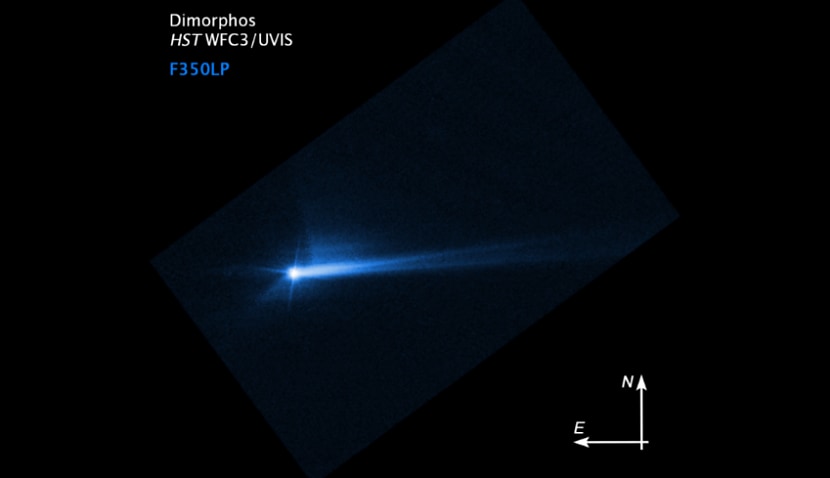
The Double Asteroid Redirection Test (DART) spacecraft collided with the asteroid on 26 September, with images of the moments before the collision broadcast live on NASA’s YouTube channel.
NASA’s goal was to change the orbit of the Dimorphos asteroid around its parent asteroid by at least 73 seconds, with an expectation that it could even change the orbit, but up to 10 minutes.
DART far exceeded expectations, however, and changed the orbit of the asteroid by 32 minutes. Dimorphos’ total orbit is only 12 hours, so a 32-minute shift represents a massive alteration.
Bill Nelson, administrator of NASA, praised the success of the DART team.
“This is a watershed moment for planetary defence and a watershed moment for humanity,” he said.
“This mission shows that NASA is trying to be ready for whatever the universe throws at us.”
Other NASA staff were equally as ecstatic about the success of the project. Lori Glaze, head of NASA’s planetary science division, said, “For the first time ever, humanity has changed the orbit of a planetary body, of a planetary object.”
The DART project cost a total of US$314 million. The 360-kilogram spacecraft was launched in November 2021 with only one instrument on board, the Didymos Reconnaissance and Asteroid Camera for Optical Navigation (DRACO).
Since the impact, astronomers and scientists at NASA have been combing the data to determine the effect of the impact of the spacecraft on the asteroid.
Stunning images have been captured by the Hubble telescope of the debris trail being emitted by the twin asteroids. The trail stretches 10,000 kilometres into space, and recently has split into two distinct trails.
Tom Statler, a program scientist for the DART mission, was confident from the outset that the DART spacecraft had moved Dimorphos further than the original goal.
“When I saw Dimorphos come into view and when I saw there was not a single crater on it and there were a lot of what appeared to be loose rocks — and this was a totally non-scientific, by-eye measurement — I looked at it and I said, ‘This is not going to be 73 seconds.’ And it wasn't,” Statler said.
The project is not over for the DART scientists, however, as the team continues to gather data on the effect of the spacecraft’s impact. Several Earth and space-based telescopes remain trained on the asteroid and the team hopes to uncover even more clues before the project is finished.

Liam McAneny
Liam McAneny is a journalist who has written and edited for his University International Relations journal. He graduated with a Bachelor of Arts (International Relations) and Bachelor of Laws from the University of Wollongong in 2021. He joined Momentum Media in 2022 and currently writes for SpaceConnect and Australian Aviation. Liam has a keen interest in geopolitics and international relations as well as astronomy.
Send Liam an email at: [email protected]
Receive the latest developments and updates on Australia’s space industry direct to your inbox. Subscribe today to Space Connect here.









